UTAH HOME TO GREATEST CONCENTRATION OF RECOGNIZED DARK SKY PLACES
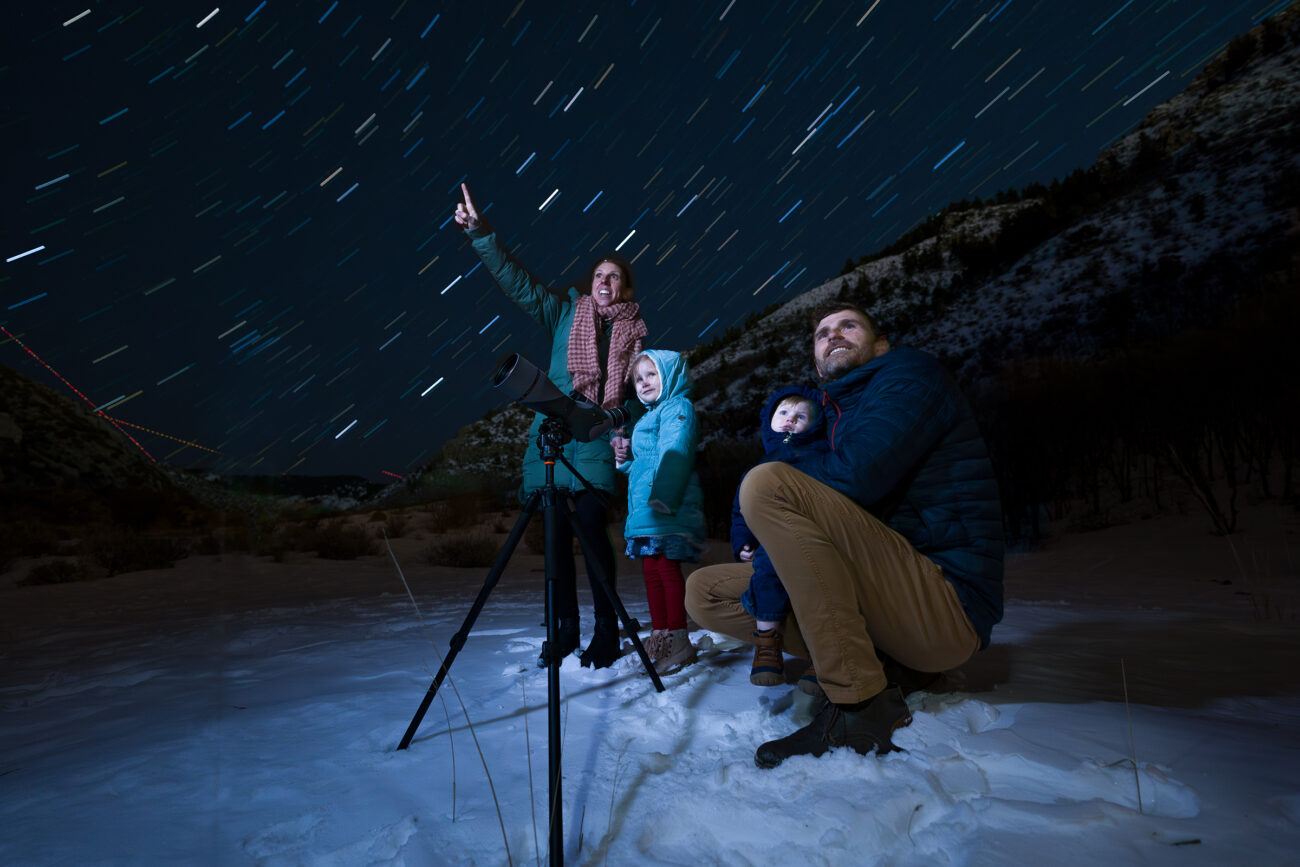
By Georgie Corkery ’24 and Lael Gilbert ’01
Utah is a place of outdoor wonders with iconic arches mountains framing picturesque communities, otherworldly salt flats, birding hotspots, and some of the greatest snow on earth. And yet, the state has another, less appreciated outdoor treasure of world-class status — a vast, dark, and incredibly starry night sky.
Someone spending time under the canopy of the Milky Way might be reminded of their humble status as a human speck, a tiny life floating through the cosmos on the surface of an insignificant planet. An experience like that can philosophically wallop a person. But in an increasingly well-lit world, these context-widening perspectives — something humanity has had in common for millennia — are getting harder to come by.
Modern communities tend to produce an abundance of artificial light. Streetlamps, digital signage, and big box parking lots are just a few of the things making it increasingly difficult to pull detail from the night sky. This is known as light pollution. For city dwellers who, after dusk, move through a seemingly eternal glow of nighttime light, the effect is akin to sitting inside a bright room trying to peer through a dark window.
Some urban areas have become so filled with ambient light that any view of the stars is now obscured, says Lisa Stoner, coordinator for the Colorado Plateau Dark Sky Cooperative, based in the Institute of Outdoor Recreation and Tourism at Utah State University.
But find a place that’s really dark, a spot where the after-hours inky blackness is actively preserved, and that window to experience an astronomical sense of awe can still be opened. And Utah is the place to find these dark skies. According to Stoner, the state has the most extensive naturally dark night skies and the greatest concentration of internationally recognized Dark Sky Places anywhere in the developed world.
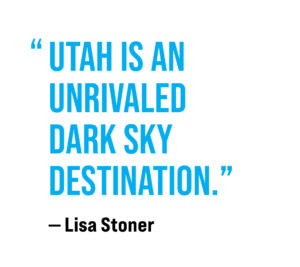
Light pollution is more than just a nuisance to recreationists and astronomers. It can have negative effects on physical health. Artificial light at night disrupts sleep cycles by hindering the production of melatonin in the brain. Triggered by darkness, the role of this hormone is to keep human day and night routines on a rhythmic track. Low production of melatonin has been linked to increased rates of diabetes, obesity, and cancer. So, having nightly breaks from artificial light is important to our long-term physical wellbeing.
There are negative effects of light pollution on mental health, as well. Increased exposure to light at night — both indoors and out — is associated with increased symptoms of depression, anxiety, bipolar disorder, and other mental health-related issues. Age-related neurodegeneration is also associated with exposure to artificial light at night. Similar to other forms of pollution, light pollution also has the largest impact on low-income communities, adding an extra strain of mental and physical health challenges to already struggling individuals.
The good news, is that for many deprived of dark nights, there are still places to settle into a comfortable dark.
“Utah is an unrivaled dark sky destination,” says Stoner, whose work focuses on outreach, development of educational programs, and partnerships to increase awareness of the value of dark night skies in the western states.
Not only are all of Utah’s “Mighty 5” national parks certified as International Dark Sky Parks, but so are six national monuments, 10 state parks, one county park, and four International Dark Sky Communities (Torrey, Helper, Springdale, and just recently, the Town of Castle Valley).
That’s a total of 26 International Dark Sky Places within the state, accounting for 13% of the 200 locations around the globe formally recognized by DarkSky International. Utah is also home to the first international Dark Sky Park, Natural Bridges National Monument, which achieved the status in 2007. However, despite having an unmatched number of protected night sky views, Utah is not a well-known destination for premier-quality stargazing opportunities.
So, What Exactly is Light Pollution?
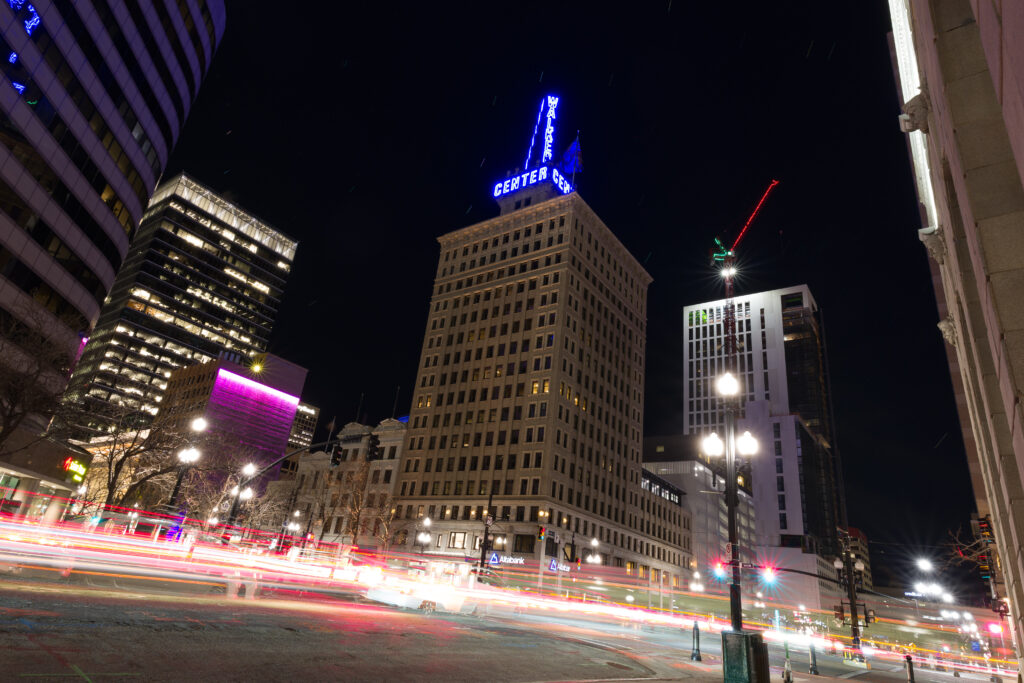
Based out of USU, the Colorado Plateau Dark Skies Cooperative delineates four kinds of light pollution that can interfere with a clear view of the cosmos — glare, light trespass, clutter, and skyglow.
Glare is an intense and blinding light that shines horizontally, reduces visibility, and causes visual discomfort — like a car coming at you with its brights on. Light trespass occurs when unwanted artificial light spills onto an adjacent property, lighting an area that would otherwise be dark, such as a floodlight or streetlight. Clutter is when there is an excessive grouping of light sources that are bright and potentially confusing, such as the Las Vegas Strip. And skyglow is the bright halo that appears over urban areas at night and is a product of light being scattered by water droplets or particles in the air.
The tool used to measure light pollution is called the Bortle Scale. It categorizes brightness of the night sky and the visibility of celestial objects based on the amount of light pollution present in a particular location. It ranges from Class 1, which is an excellent dark sky, to Class 9, a severely light-polluted sky. This scale is widely used by astronomers, astrophotographers, and those interested in preserving and enjoying dark skies.
As astrotourism becomes an increasingly popular outdoor recreation activity in Utah, it could offer economic potential for many of Utah’s rural communities, says Stoner. When light pollution is minimized and controlled, this affords an opportunity for communities to attract visitors to experience a brilliant starry night.
As a sustainable form of outdoor recreation, astrotourism allows visitors to experience nature in a new way and encourages them to travel to out-of-the-way destinations. Cosmic events like the annular solar eclipse in October 2023, the great conjunction of Jupiter and Saturn in December 2020, the annual meteor showers of the Lyrids, Perseids, and Leonids, and deep space phenomena only visible with telescopic aid, are attracting more visitors for hands-on night-sky experiences across the state.
A Passport to the Stars
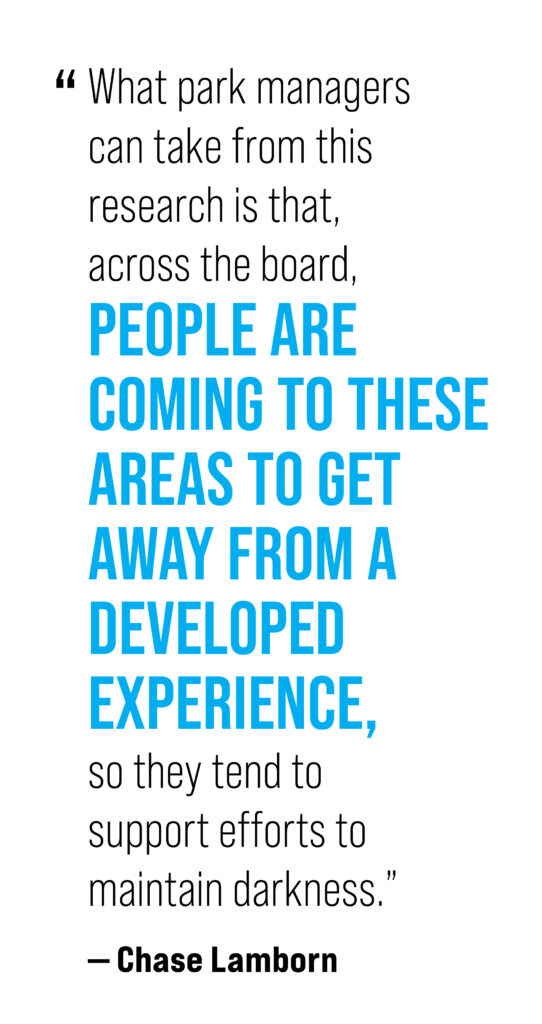
The Utah Dark Sky Passport is a new, after-hours cousin to the national parks passports. The destination-focused resource can be found at visitor centers across the state. The program was launched initially for a young audience by the Colorado Plateau Dark Sky Cooperative but is now being adopted as a bucket-list itinerary for stargazers of all ages. It encourages broad appreciation for what Utah skies have to offer, says Stoner.
The project debuted in 2023 and was funded through USU Extension. In it, nighttime explorers learn what a dark sky is and how it may differ from where they live, best practices for reducing light pollution, where to find a star party, dark sky activities that can be done at home, and even the chance to receive a Dark Sky Passport certificate.
Research from USU is supporting the expansion of astrotourism in Utah. A project within the Institute for Outdoor Recreation and Tourism surveyed state and national park visitors about how they valued and experienced dark skies. The work found that more than half of visitors spending a night in parks had participated in activities that depended on a dark sky — such as stargazing — and they overwhelmingly supported actions to protect night sky quality. The majority of those surveyed also showed an interest in learning more about night sky topics.
“There is a lot of interest, appreciation, and use of dark environments,” says Chase Lamborn, a researcher in the S.J. and Jessie E. Quinney College of Natural Resources and coauthor on the study. “We found a lot of broad support for actions aimed toward reducing light pollution.”
Lamborn says the results of this study will help decisionmakers gauge community support for actions aimed at reducing light pollution.
“Our results show there is a high appreciation for dark environments,” he says. “When managing a place to create dark skies, decisionmakers have the chance to think more broadly about cultivating dark environments for visitors looking to get away from all things developed.”
The trick is striking a balance between an experience that is accessible and comfortable, while still providing the full outdoor experience. Managers must navigate a fine line for designing spaces that preserve the dark and still serve a broad section of the public, including those who may not be comfortable outside in remote and wild areas. Lit pathways in campgrounds, for example, help some people feel comfortable, but using a minimal number of dim lights close to the ground to cut down on ambient light also reduces light pollution.
“What park managers can take from this research is that, across the board, people are coming to these areas to get away from a developed experience, so they tend to support efforts to maintain darkness,” Lamborn says.
Getting Comfortable with the Dark Side
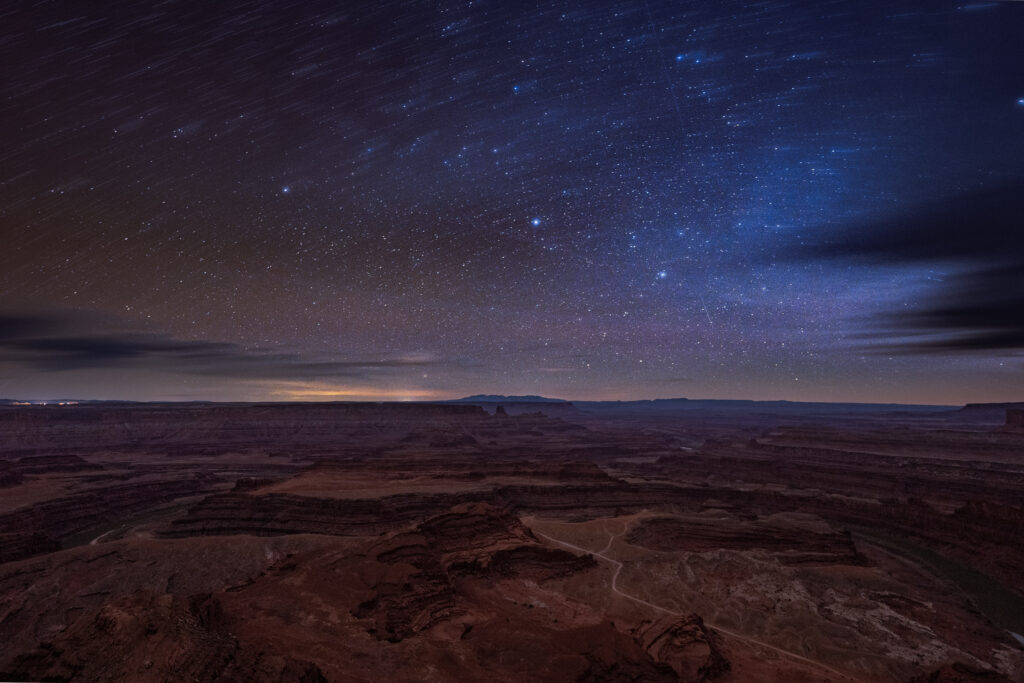
Reducing light pollution is also important for animals and other creatures who depend on the night. Skyglow is specifically disorienting for animals that use the stars to migrate — especially birds.
Artificial lighting at night draws birds to urban areas where they are at higher risk of colliding with building windows and vehicles. Bird-window collisions, which also occur during daylight hours, are the second-leading cause of dwindling bird populations, after habitat loss.
In the United States, it is estimated that anywhere from 365 million to nearly 1 billion birds collide fatally with windows annually. Light pollution and bird-window collisions are of such big concern there are initiatives across the country to turn off superfluous outdoor lighting during migration season, including the Lights Out Salt Lake project from the Tracy Aviary in Salt Lake City.
Predatory species that hunt at night and insects that are drawn to light are other species affected when there is too much light pollution. A well-known example of how artificial light at night affects animals is the disruption of sea turtles hatching and instinctively crawling from the beach towards the moon’s reflection, leading them back to the ocean. Light from urban areas confuses these hatchlings, causing them to crawl in the wrong direction.
Along with the negative effects to our mental and physical health and the environment, light pollution is also hurting our wallets. Outdoor lighting makes up approximately 8% of global energy use, with about 60% of that wasted as unneeded, over-lit, or poorly aimed lighting. In the United States, approximately one-third of all lighting is wasted, and estimates suggest that nearly $7 billion of energy is wasted as light pollution annually. For every $100 spent operating a dusk-to-dawn light fixture, $45 is wasted on light that never reaches the ground.
Turning off lights that don’t have a clear purpose, as well as using motion sensors, warm-colored bulbs, and light fixtures that shine down are all simple ways to reduce light pollution.
To find out more about light pollution, Dark Sky Places, or how to get an area designated a Dark Sky area, visit darksky.org.






Brian Morgan April 30, 2024
We LOVE visiting the Utah National Parks in the evening for exactly this reason. Unbelievable views of the worlds around us.